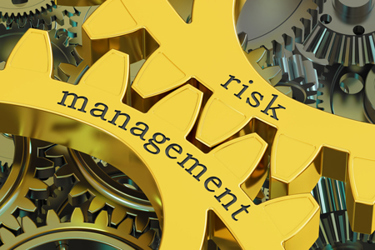Why Small Clinical-Stage Companies Need Developmental Risk Management Plans
By Kamlesh Prabhu, sr. director of pharmacovigilance, Omega Therapeutics

In the fast-paced world of pharmaceutical drug development, many small clinical-stage companies play a crucial role in bringing innovative therapies to patients. These companies often operate with limited resources, yet their impact on drug discovery and patient care is immense. In the everyday hustle and bustle of clinical trials, pharmacovigilance (PV) groups have a difficult job of convincing their fellow development colleagues to add another document, the developmental risk management profile (DRMP), to the ever-growing list of clinical and regulatory documents. However, it is also PV’s job to ensure that this critical document is created, maintained, and periodically updated.
What Is A DRMP?
A DRMP is a living document designed to identify, characterize, and manage risks associated with a medicinal product during its development. Unlike the formal risk management plan (RMP) required at the time of marketing authorization, a DRMP is not mandatory (hence the lack of interest in creating one) during the pre-authorization phase. However, it serves as a valuable guide for safety surveillance throughout the product’s life cycle and a reference that can easily feed into other regulatory documents, such as the investigator’s brochure (IB), development safety update report (DSUR), clinical study report (CSR), etc. Although it’s not a legal document, it is subject to legal discovery.1
Why Should Small Clinical-Stage Companies Prioritize DRMPs?
- Early Documentation and Communication of Risks: Unlike the IB and DSUR, which are updated annually, DRMPs provide early documentation of known, anticipated, or potential risks associated with a compound. They provide a structured approach that can be used to document evolution of risks over time. They can be used to provide context to safety management teams/data monitoring committees in periodic review meetings. They are useful in creating training slides, investigator meetings, and site initiation visits. They are a one-stop-shop resource for all known and potential safety risks associated with the product that any new investigator can be made aware of. This is especially true for first-in-human trials where there are no products for reference and non-human primate (NHP) data doesn’t always correlate with human experiences.
- Optimizing Benefit-Risk Balance: Small companies often face resource constraints, making it difficult to optimize and conduct benefit-risk balance exercises from time to time. A well-structured DRMP helps achieve this balance by reducing redundant activities around risk management that are conducted during annual updates as well as during initiation of new studies within the same clinical program.
- Integration with Clinical Development Plans: There are many small clinical-stage companies that don’t have a pharmacovigilance group when they start their clinical program. Most of the safety and risk management activities are conducted by a vendor or by people working in the sponsor’s clinical groups. In absence of a dedicated PV group, clinical groups should approach their vendor/consultant to implement a DRMP while they are developing a clinical development plan.
Key Components Of A DRMP
A DRMP naturally evolves into an RMP as the product gets closer to market authorization. The CIOMS Working Group VI provides a template,1 but companies still have flexibility on what they want to include in the document. Below are some key components that should be included in the body of the DRMP.
- Risk Identification: This is a record of risks identified early based on preclinical and clinical studies, interim safety findings, and real-world data if available. This is especially important when there are theoretical risks involved, as was in the case of TGN1412, where there was a theoretical risk of a cytokine storm but the clinical investigation sites were not prepared to detect and treat it.2 The DRMP serves as a guidance document in such situations to aid in early detection and mitigation of risks that may not be listed in the IB.
- Risk Characterization: This provides a detailed assessment of risks, including severity, frequency, and potential impact. This goes hand in hand with signal detection activities.
- Risk Minimization Strategies: These are action plans to minimize identified risks, such as dose adjustments, informed consent form changes, patient monitoring, or communication strategies. This should also list all the “Dear Investigator” letters sent, along with rationale for sending them and the background investigation.
Conclusion
For small clinical-stage companies, DRMPs are not a regulatory requirement but a strategic imperative. The interdisciplinary nature of the DRMP ensures that there is a single source of truth for all safety-related queries from external stakeholders. By proactively managing risks, these companies can enhance patient safety, increase efficiency, and contribute to the success of their innovative therapies.
References
- Council for International Organizations of Medical Sciences (CIOMS): Management of Safety Information from Clinical Trials: Report of CIOMS Working Group VI, 2005 (92 9036 060 7). Available at https://cioms.ch/publications/product/management-of-safety-information-from-clinical trials-report-of-cioms-working-group-vi/#citations
- Attarwala H. TGN1412: From Discovery to Disaster. J Young Pharm. 2010 Jul;2(3):332-6. doi: 10.4103/0975-1483.66810. PMID: 21042496; PMCID: PMC2964774. Available at https://www.ncbi.nlm.nih.gov/pmc/articles/PMC2964774/
About The Author:
 Kamlesh Prabhu, B.Pharm., MS, is the senior director of pharmacovigilance at Omega Therapeutics and is responsible for all of the clinical safety activities. He has more than 15 years of experience in pharmacovigilance within biotech as well as the CRO industry. He has previously worked in SQZ Biotech, Takeda, Shire, and Sanofi in their pharmacovigilance departments.
Kamlesh Prabhu, B.Pharm., MS, is the senior director of pharmacovigilance at Omega Therapeutics and is responsible for all of the clinical safety activities. He has more than 15 years of experience in pharmacovigilance within biotech as well as the CRO industry. He has previously worked in SQZ Biotech, Takeda, Shire, and Sanofi in their pharmacovigilance departments.
